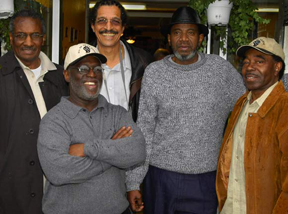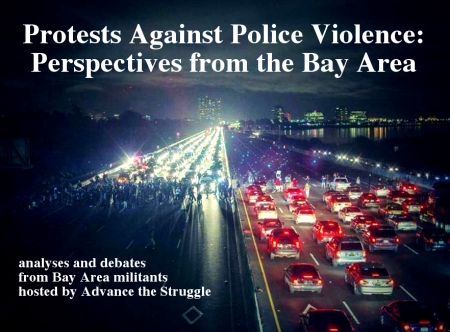 The roots of the Black Panther Party (BPP) lie within student struggle for fully-funded public education reflecting Black history, culture, and struggle. The founders of the party, Huey Newton and Bobby Seale, met at Merritt College in Oakland and began to struggle for education together with other black students. But unlike liberal forces in the movement, Newton and Seale saw the necessity to connect their struggle as black students to structural oppression in working-class black communities. Police murder and beatings combined with a deadly lack of jobs, healthcare, food and affordable housing; the BPP saw that the struggle for control over our schools must be connected to the revolutionary struggle for control over our communities. Looking to the present not a whole lot has changed in Oakland: the BART police murder of Oscar Grant and the numerous murders committed by OPD before and after him demonstrate that state-sponsored racism and violence continues to oppress and kill us; East Oakland has some of the highest rates of foreclosures in the state creating more and more homeless families; health clinics and other vital social services continue to get cut back or completely eliminated; free after-school youth programs and daycare centers continue to close down placing more burdens on working-class mothers, who struggle to find ways to make sure their children are cared for when they attend work and/or school. A central difference between then and now is the lack of an organization like the BPP striving to connect these issues and build community control. There is however a growing student movement, which is trying to fight the budget cuts and demand affordable quality education. There are also
The roots of the Black Panther Party (BPP) lie within student struggle for fully-funded public education reflecting Black history, culture, and struggle. The founders of the party, Huey Newton and Bobby Seale, met at Merritt College in Oakland and began to struggle for education together with other black students. But unlike liberal forces in the movement, Newton and Seale saw the necessity to connect their struggle as black students to structural oppression in working-class black communities. Police murder and beatings combined with a deadly lack of jobs, healthcare, food and affordable housing; the BPP saw that the struggle for control over our schools must be connected to the revolutionary struggle for control over our communities. Looking to the present not a whole lot has changed in Oakland: the BART police murder of Oscar Grant and the numerous murders committed by OPD before and after him demonstrate that state-sponsored racism and violence continues to oppress and kill us; East Oakland has some of the highest rates of foreclosures in the state creating more and more homeless families; health clinics and other vital social services continue to get cut back or completely eliminated; free after-school youth programs and daycare centers continue to close down placing more burdens on working-class mothers, who struggle to find ways to make sure their children are cared for when they attend work and/or school. A central difference between then and now is the lack of an organization like the BPP striving to connect these issues and build community control. There is however a growing student movement, which is trying to fight the budget cuts and demand affordable quality education. There are also  individuals and organizations who, like Bobby and Huey, are trying to connect the student struggle to broader issues affecting the working-class as a whole. One of these is the militant student organization Student Unity & Power (SUP), which exists at San Francisco State University, City College of San Francisco, and Laney College. The Laney College branch has put forth a very important analysis demonstrating their radical perspective while drawing from the rich local history of one of the most inspiring and influential revolutionary organizations of all time, The Black Panther Party. This analysis will be useful as we move forward in our struggles for freedom, peep game!
individuals and organizations who, like Bobby and Huey, are trying to connect the student struggle to broader issues affecting the working-class as a whole. One of these is the militant student organization Student Unity & Power (SUP), which exists at San Francisco State University, City College of San Francisco, and Laney College. The Laney College branch has put forth a very important analysis demonstrating their radical perspective while drawing from the rich local history of one of the most inspiring and influential revolutionary organizations of all time, The Black Panther Party. This analysis will be useful as we move forward in our struggles for freedom, peep game!
Panthers at Peralta
by Laney College Student Unity & Power
SUP draws inspiration from the birth of the Black Panther Party for Self Defense in October 1966 when Huey Newton and Bobby Seale met as students on 57th and Grove St. (now Martin Luther King Jr. Way) at Merritt College. Unliketoday’s view of Peralta as a job training hub, the Panthers saw the campus as “not a typical institution for so-called higher learning. Grove Street College is what is called a community college: a place where, for a variety of reasons, people who don’t have an opportunity to attend larger colleges and universities go to seek knowledge and hope for a better life.” The Grove Street campus also represented a base for organizing the neighborhood and a place to demand self-determination for Black and all oppressed people via community control of the curriculum, operations and facilities of the College. While engaged in militant resistance to the District, rank-and-file Panther women built counter-institutions to reproduce their culture of struggle.
This piece is an effort to remember the lessons of their struggle. Continue reading





You must be logged in to post a comment.